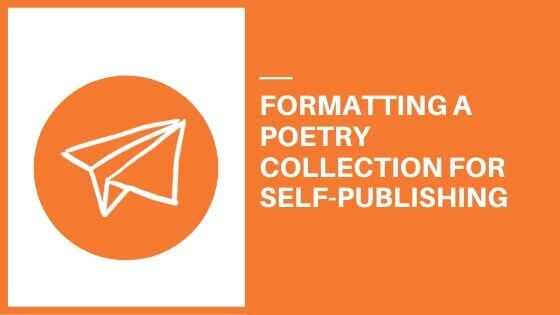With the passionate heart that only a poet can possess, you make the bold decision to publish your finest works.
Poets are the artists of the written word, eliciting intense emotional responses, and provoking fresh new insights among their readers. The thought of pulling together a collection of poetry and creating a beautiful book is so exhilarating that you may have forgotten one small detail—how to format a poetry book.
Self-published authors of fiction and non-fiction are well aware of the strict formatting practices that must be adhered to before submitting a manuscript for publication.
Authors of poetry face a variety of different challenges when it comes to understanding poetry book format guidelines. The wise poet will adhere to the poetry submission format to avoid headaches in the publication process later, while still enjoying some creative latitude.
Here’s How to Format Your Poetry Book for Publication
As for the actual poetry book formatting, while industry standards exist poetry manuscripts are provided some leeway for the sake of creativity, similar to art or photography books. The poetry formatting guidelines provide the basic structure for publishing a collection of poetry, however, variations are perfectly acceptable.
Here are step-by-step industry poetry formatting guidelines for publication:
- Use Time New Roman font, 12 point
- Include a title page with the capitalized title halfway down the page, and the author name below it
- Margins are one-inch all around, however, manuscripts can use up to 2.5” margins
- Pages should be numbered
- The manuscript can be grouped in chapters or sections or both
- Include a table of contents
- Poems should be single-spaced, with double spaces between stanzas
- Indent the lines that would otherwise continue across the page, although some prefer to align all text left
- Each poem should be on a separate page
- Use page breaks at the end of each poem instead of hard returns
Once you have formatted your collection of poems, it is advisable to enlist the priceless services of an editor and proofreader.
Being swept up in the crafting of rich poetry can sometimes blind the poet from the rudimentary elements of syntax or even pesky typos. This is where the editing professionals can step in and fine-tune for the perfect poetry submission format. Once edited, the formatter will then select attractive fonts and add graphic touches or photography,. This step isn’t required but it increases the visual appeal of the manuscript before it goes to print.
Poetry Format Examples to Follow
It’s one thing to learn how to format a poetry book. However, sometimes actually executing the project leaves you scratching your head. This is where some handy visuals can be immensely helpful. Just seeing some finished examples of the poetry book formatting process can provide additional guidance:
- Poems from 100 Poems by e.e. cummings demonstrates wider-than-standard margins, as well as creative spacing.
- Poems from Love Her Wild: Poetry by Atticus demonstrates the use of mixed margins and the addition of a photo image to provide a visual.
- A selection from Elizabeth Barrett Browning’s Sonnets From the Portuguese aligns all text left, versus indenting portions of the lines.
- Poems from The Sun and Her Flowers by Rupi Kaur use only lower-case lettering, alternative word formatting, and graphics.
- Maya Angelou’s The Complete Poetry demonstrates classical indented formatting and wider margins. The page break allows poems to end mid-page and a new poem to follow on the following page.
- Lunch Poems by Frank O’Hara uses creative indented blocks.
- A table of contents, such as in Robert Frost’s Poems helps to arrange the material for the reader into themes or sections.
Take Control of Your Poetry Formatting
An author of poetry has a very specific vision for their poetry collection. This may include unique typesetting that further enhances the essence of the poems themselves, or just provides an interesting creative visual effect.
Using a self-publishing house, such as Gatekeeper Press, allows the author to maintain creative control over their project while still enjoying the many benefits of having a partner in the editing and publishing process. Gatekeeper Press takes care of the formatting in a professional manner and according to best standards, allowing you to focus your attention on writing poetry.
Reach out to Gatekeeper Press today for invaluable guidance on how to best format your poetry.

